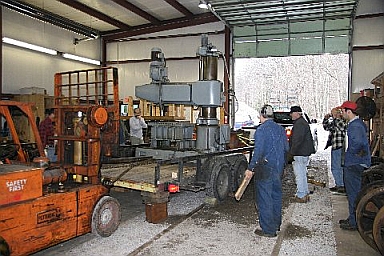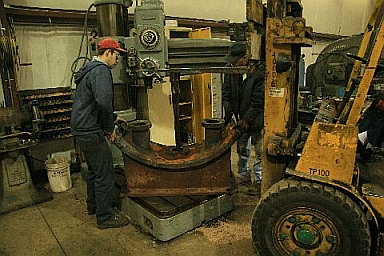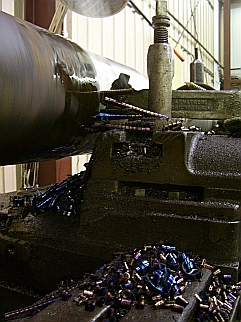

 The
radial drill press
as it was being unloaded from its delivery trailer.
Unloading was not trivial since the small fork lift could not
get good access to the press on the trailer. (Photo by Water
Scriptunas, II).
|
 The
rebuilt smoke box saddle being placed on the bed of the
recently installed radial drill press, where six broken studs will be
drilled out. (Photo by Water
Scriptunas, II).
|
 Lifiting
the new crankshaft in preparation for placing it in the Loge and
Shipley lathe. (photo by Andy Fitzgibbon).
|
 Cuttings
produced as the diameter of the crankshaft was cut down from 8.5" to
7.5". The final diameter will be about 6.3", but the
intermediate
size will allow use of an additional steady rest. (Photo by
Andy
Fitzgibbon).
|